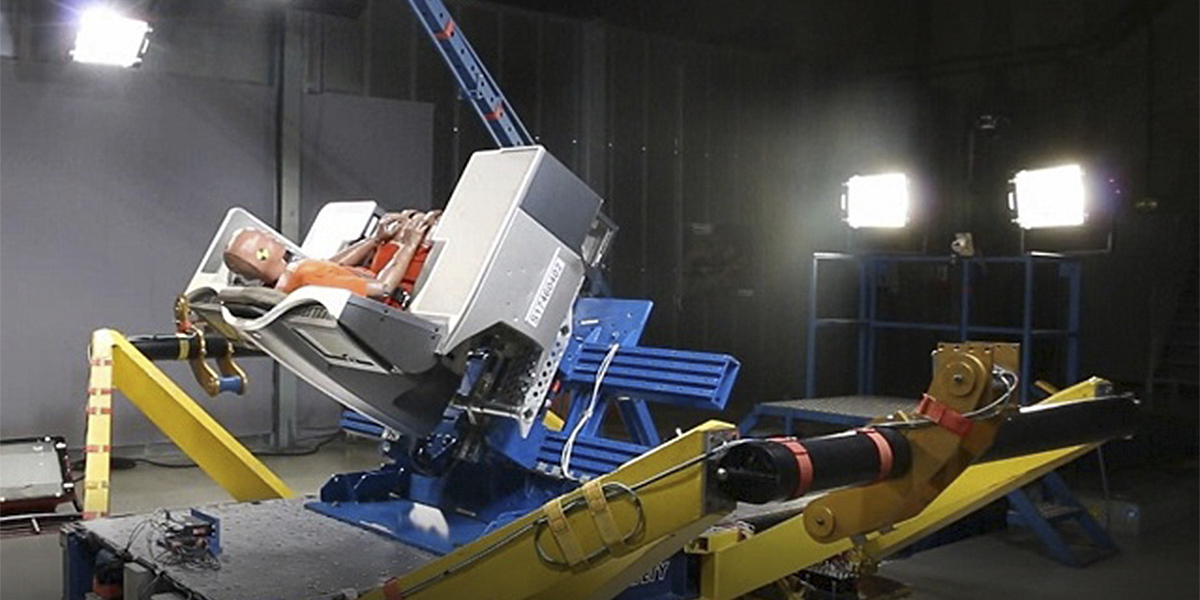FMVSS 214 Side Airbag Occupant Protection Crash Test
The FMVSS (Federal Motor Vehicle Safety Standards) 214 Side Airbag Occupant Protection Crash Test is a critical component of automotive safety testing. This test evaluates the effectiveness of side airbags in protecting occupants from injury during high-speed, low-impact collisions on the vehicle’s right side.
FMVSS 214 mandates that all passenger cars manufactured after September 1, 1998, must pass this test to ensure compliance. The standard aims to mitigate injuries caused by the door and window structures in case of a side impact at speeds between 30-50 km/h.
The test utilizes a rigid barrier located on the right side of the vehicle, which simulates a pole or other roadside obstacle. A sled containing a crash dummy is accelerated towards this barrier to replicate the collision conditions specified by FMVSS 214. The dummy’s position and orientation are carefully calibrated to mimic real-world passenger seating arrangements.
The test requires rigorous preparation of the vehicle, including proper placement and configuration of the side airbags. Compliance with the standard necessitates that the airbags deploy correctly in response to the collision forces. Post-test analysis involves detailed examination of dummy injuries as indicated by dummies’ sensors, which measure acceleration, deceleration, and other relevant parameters.
To ensure accurate and reliable results, laboratories conducting FMVSS 214 tests must adhere strictly to all ISO (International Organization for Standardization) guidelines. This includes precise calibration of test equipment, adherence to strict environmental conditions during testing, and thorough documentation of the entire process.
The importance of this test cannot be overstated; it is a crucial step in enhancing vehicle safety and reducing casualties from side collisions. Compliance with FMVSS 214 helps manufacturers meet stringent federal regulations while improving overall vehicle safety standards.
Understanding the nuances of this testing protocol is essential for quality managers, compliance officers, R&D engineers, and procurement personnel involved in automotive manufacturing. By leveraging accurate and consistent data from such tests, these professionals can make informed decisions that drive safer vehicles to market.
Benefits
- Enhanced safety for occupants during side impacts
- Promotes regulatory compliance and reduces legal risks
- Improves overall vehicle reliability and performance
- Aids in the design of safer vehicles by providing detailed test data
- Ensures consistent quality across different production batches
- Facilitates continuous improvement in vehicle safety features
Quality and Reliability Assurance
The FMVSS 214 Side Airbag Occupant Protection Crash Test is a cornerstone of automotive safety. To ensure the reliability and accuracy of these tests, laboratories must adhere to strict quality assurance protocols.
Critical components include advanced crash test dummies that simulate human responses accurately. These dummies are equipped with sensors measuring forces during impact, allowing for precise analysis of injury potential. The laboratory environment is controlled to maintain consistent temperature, humidity, and other relevant parameters throughout testing.
Calibration of equipment and regular maintenance are paramount in ensuring accurate results. Each test setup undergoes rigorous inspection before use, and operators receive ongoing training to stay current with best practices.
Data analysis plays a crucial role in verifying compliance. Post-test reports provide detailed insights into the performance of side airbags under specified conditions. These reports guide manufacturers in making necessary adjustments to improve future vehicle designs.
Use Cases and Application Examples
| Test Scenario | Purpose | Main Outcome |
|---|---|---|
| A passenger car model undergoes FMVSS 214 testing in a laboratory setting. | To ensure side airbag deployment effectiveness and occupant protection during low-speed, high-force impacts. | Test results indicate the performance of side airbags under specified conditions. Compliance with FMVSS 214 is determined based on these outcomes. |
| A vehicle manufacturer conducts periodic tests post-production to ensure ongoing compliance and quality. | To maintain consistent safety standards across all production batches. | Continuous monitoring of side airbag performance ensures adherence to FMVSS 214 criteria, thereby enhancing overall vehicle safety. |
| Test Scenario | Purpose | Main Outcome |
|---|---|---|
| A new model of passenger cars is being developed and undergoes FMVSS 214 testing during the design phase. | To evaluate the effectiveness of side airbag deployment in various real-world scenarios. | Test results provide valuable data for refining vehicle designs, ensuring they meet or exceed FMVSS 214 standards. |
| An independent third-party agency conducts FMVSS 214 tests on behalf of a manufacturer to verify compliance. | To ensure that the vehicle meets all safety regulations before market release. | Compliance verification through rigorous testing and detailed reporting confirms adherence to FMVSS 214, enhancing consumer confidence in vehicle safety. |





